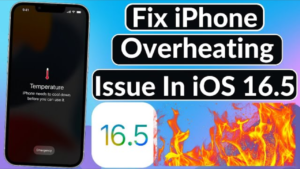The telecommunication industry is nowadays facing a lot of pressure as they struggle to provide increased coverage to their customers looking to consume content. The increasing use of mobile-first streaming models in the market together with the latest innovations in the digital arena has put enough strain on the networks and has brought about an increase in the demand for 5G infrastructures.
The problem with these infrastructures is that they are expensive to install and scale in addition to requiring a long amount of time to market. However, there is an innovative solution to this problem that is already receiving considerable attention and can relatively provide a better way to address the data demands and requirements of the consumers. The best part is custom mailer boxes can even help establish connections in the remotest regions of the world. We have ushered into a new age of satellite technology.
1. A New Age: NEXT Generation Satellite
The first geostationary satellite (GEO) was launched in the 1960s. Since then, the satellite industry has seen numerous advancements and innovations. With satellites, the world turned into a global village especially live transmissions of the events like 1964 Tokyo Olympics. It is only recently that many private sector companies like Starlink and SES have introduced satellites in the Low Earth Orbit (LEO) and Medium Earth Orbit (MEO). The impressive part is that these satellites lowered the overall expenses and drastically increased the accessibility to genuine high bandwidth satellite connectivity.
On one hand, a single GEO satellite located at an altitude of 35,786km provides considerable coverage of the Earth’s surface. On the other hand, MEO satellites only provide coverage of a smaller area from an altitude of just 2000km. To ensure global coverage, more satellites are required. SES’ upgrade to the O3b service is a good example. This service will use 11 satellites which are cheaper to build and launch as compared to their GEO predecessors. With them, the connections become faster with reduced latency. Moreover, new HTS (High-Throughput Satellite) technologies are being implemented to give a boost to the available bandwidth.
Interestingly, LEO satellites take this concept to wholesale packaging boxes at different levels. The LEO satellites operate between 160 to 2000km with a 90-minute orbital period. Thousands of such satellites are require to form a network for maximum coverage but the catch here is that these can be make at a low cost and can easily launch making it a practical option. In addition to that, these satellites provide low network latency and high speed which makes two-way functionality a possibility in real-time.
2. A Golden Opportunity for Telcos
LEO technology can prove to be an effective step towards 5G services and International Calling Services. Quite expectedly, latency shall remain high in some zero-latency 5G use cases such as piloting autonomous vehicles. However, LEO technology is an ideal choice for the provision of connectivity services to these vehicles and their owner. Other such examples include smart city functionality, disaster relief, commercial maritime, sensors for telemedicine, industrial offshore applications, and provision of backhaul for 5G. In fact, according to ABI Research, within the next five years, around 20 million IoT (Internet of Things) connections will be make through satellite.
LEO technology in satellites makes all this happen in the telecommunication sector in the short term. The good news is that it can also open up avenues for further opportunities down the road. With LEO, the telecom industry has an amazing opportunity to produce relatively resilient. And dynamic global networks having adequate redundancy for all eventualities and use cases.
3. Future is now!
The latest interrupted technology is providing VoIP service providers for international calling connectivity. Infrastructure and models in the sky along with several amazing services shows the future is quite bright. For the telecom industry, this is a great business opportunity in terms of the development of ground infrastructure. Like teleports eventually helping the telecom sector to grow with the satellite companies. This can make telco a promising partner not only in the domestic market. But also in novel markets of satellites surrounding the planet.






